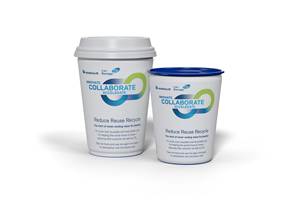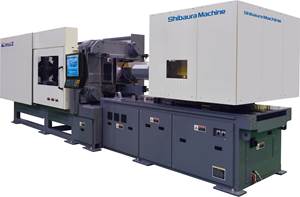Top 10 Reasons Why Molders Fail At Implementing ‘Scientific Molding
Injection Molding Know How
What is Scientific Molding? And why do molders seem to have such a difficult time embracing its concepts? Here are some thoughts on the matter.
EDITOR’S NOTE: Our regular contributor in this space since November 2009, John Bozzelli, took his first break this month after authoring the Injection Molding Know How column in every issue for three years. In his stead is colleague Kip Doyle, who has been involved in injection molding from the viewpoint of the processor, machine builder, and trainer/consultant for 30 years. John’s contributions will return next month.
Scientific Molding is a phrase that followers of John Bozzelli’s teaching and readers of his Plastics Technology columns should be familiar with by now. But what is Scientific Molding? And why do molders seem to have such a difficult time embracing its concepts?
The answer to the first question is straightforward: Scientific Molding is a practice for achieving optimal control of the injection molding process to deliver faster molding cycles, higher yields, and a more robust molding process. This optimal control of the molding process is realized by focusing mainly on the behavior of the material in the mold, rather than on the machine.
Bozzelli regularly reminds his audience of the many benefits a molder will realize by implementing this processing strategy—like making better parts, fewer rejects. And making more money. He’ll also tell you that that this approach takes a fair amount of effort, dedication, and focus to implement. That gets us to answers to the second question. I thought it might be useful to look at why molders fail or stop trying (with apologies to David Letterman and his regular “Top 10” bit on The Late Show):
Number 10: Lack of proper training. In my experience, many people don’t see the big picture of what it takes to implement Scientific Molding. Simply sending one employee to even the best of seminars isn’t enough. Management is often looking for a “quick fix” rather than understanding the need for a total cultural change. Training cannot be viewed as a one-time event. The most successful implementation strategy includes an on-going training plan.
Number 9: Lack of support at all levels and departments (top management through technician). Efforts to implement Scientific Molding must be supported at all levels. Floor-level personnel cannot do it without the understanding and support of management. Investment of time, money, and resources is required. By the same token, management cannot “push” the employees into this approach. A clear understanding and buy-in is required at all levels.
Support groups (tooling, maintenance, QC, etc.) also must be involved. One of the main benefits of Scientific Molding is fostering a common language and consistency in processing strategy. It is critical that everyone be on the same page.
Number 8: Short-term thinking. This often results in short-cut taking. Optimizing and documenting a process using Scientific Molding techniques takes time. A number of procedures must be performed and data must be collected. There are no short cuts. In the busy day-to-day manufacturing world, it is often difficult to make the time to do all of the right things. Cutting corners results in half-baked results.
Number 7: Lack of proper tools. Like all jobs, the proper tools are required to establish a properly optimized process. The Scientific Molder’s toolbox must include temperature measurement devices, weigh scales, part measurement devices, process monitoring devices, water-flow measurement devices, etc. These tools are critical to collect all of the information necessary to do the job properly.
The well-equipped Scientific Molder will also have the necessary “soft tools,” including spreadsheets, lab forms, procedure instructions, etc. for gate-seal studies, viscosity curves, pressure-loss studies, machine testing procedures, etc.
Number 6: Machine performance issues. Scientific Molding is built on the foundation of a properly performing molding machine. A properly trained Scientific Molder knows how to test machine performance in key areas, including load sensitivity (injection velocity control), pressure control (pack and hold), nonreturn valve performance, temperature control, etc. The machine must be capable of performing properly and maintaining repeatability. When performance issues are detected, machine calibration or repair may be required. In some cases, the machine must be modified or upgraded. In some rare cases, the machine must be replaced. Scientific Molding will not compensate for a poorly performing machine.
Number 5: Can’t get past the “machine-focused” approach. In Scientific Molding, the processor molds from the plastic’s “point of view.” For many years molders have been focused on machine parameters and not plastic parameters. Many articles have been written on the four primary plastic variables (plastic temperature, plastic flow, plastic pressure, and plastic cooling rate and time). The Scientific Molder must understand this approach and the process must be optimized and documented from the perspective of the plastic. For many, something as simple as thinking in plastic pressure rather than hydraulic pressure is difficult. The successful molder must overcome this machine-focused line of thinking.
Number 4: Not processing from the “plastic’s point of view.” OK, we just said this, but you know what?, it’s important enough to repeat. This is a major paradigm shift for most molders. It is critical that the Scientific Molder adopt the mindset of processing from the plastic’s “point of view.”
Number 3: Allowing emotions rather than facts and data to drive processing efforts. The Scientific Molder understands that injection molding is a science, not a black art. The “magic dust” and lucky chants must be left behind. Process changes must be based on facts and data, not emotion. The successful molder has a good reason for everything he or she does.
Number 2: Trying to solve part-design/tooling/material issues through processing. There are five critical components to any successful plastics application: part design, material selection and handling, tool design and construction, processing, and testing. Each component is equally important and each must be done correctly. Processing cannot be expected to compensate for errors in the other four areas.
And now, for the top reason molders fail in their efforts to institute Scientific Molding…
Number 1: Resistance to change. We are all creatures of habit. The more years of experience the molder has, the harder it is to embrace a totally new way of thinking. For many companies, this is a show-stopper. Every company has its own unique culture and approach to processing. Changing to a new approach after decades of processing in a certain way is very difficult for some people.
Although implementing Scientific Molding takes time, effort, and resources, it is an effort that is well worthwhile. For many, implementation of Scientific Molding has resulted in a dramatic increase in profits. In some cases, it has been credited with saving companies that were on the verge of closure. Scientific Molding is much more than an industry buzzword. It is a trend that is changing our industry for the better.
About the Author: Kip Doyle
Kip Doyle has more than 30 years of experience in injection molding, with more than 20 of them spent in production management and process engineering. He worked for injection machine builders in various technical positions for seven years, and spent three years at RJG Inc. in consultant/trainer and sales roles. He has proven expertise in Scientific Molding techniques and is an RJG certified Master Molder & Trainer (level III). Doyle is the founder of moldinghelp.com in Battle Creek, Mich., a provider of training and consulting services to injection molders. Contact: (269) 979-5616; email: kdoyle@moldinghelp.com; website: moldinghelp.com.
Related Content
Kurz Opens New Plant in Vietnam
The maker of decorative thin films invested 37 million euros in the new 60,000-m2 plant in Quy Nhơn, which joins regional production facilities in China and Malaysia.
Read MoreBorealis and Bockatech Showcasing Ultra-Lightweight Reusable PP Cups
Use of Borealis PP and Bockatech’s EconCore next-generation foaming technology yields thin-wall, robust and fully recyclable cups.
Read MoreCompletely Connected Molding
NPE2024: Medical, inmold labeling, core-back molding and Industry 4.0 technologies on display at Shibaura’s booth.
Read MoreDuraTech Industries Licenses TactoTek’s Injection Molded Structural Electronics (IMSE)
The custom graphics manufacturer specializing in in-mold and printed electronics now has the rights to sell, design and produce parts that use TactoTek’s intellectual property.
Read MoreRead Next
Why (and What) You Need to Dry
Other than polyolefins, almost every other polymer exhibits some level of polarity and therefore can absorb a certain amount of moisture from the atmosphere. Here’s a look at some of these materials, and what needs to be done to dry them.
Read MorePeople 4.0 – How to Get Buy-In from Your Staff for Industry 4.0 Systems
Implementing a production monitoring system as the foundation of a ‘smart factory’ is about integrating people with new technology as much as it is about integrating machines and computers. Here are tips from a company that has gone through the process.
Read MoreLead the Conversation, Change the Conversation
Coverage of single-use plastics can be both misleading and demoralizing. Here are 10 tips for changing the perception of the plastics industry at your company and in your community.
Read More











